Dimensions of Cinder Block
Important Point
The dimension of cinder blocks vary with size and they are also called concrete blocks, which are widely used construction materials.
They construct in different dimensions, which determine their utility and utility. Below we provide some common types of cinder block dimensions including
Standard Block
The most common size of cinder block is 8 inches X 8 inches X 16 inches (8″x8″x16″).
This different size is used for foundations, walls, and other structural aspects.
Half Block
Measuring 8 inches by 8 inches by 8 inches (8″x8″x8″), half blocks are often used at the ends of walls or for adjusting wall heights in combination with standard blocks.
Jumbo Block
Larger than the standard block, jumbo blocks can measure 8 inches by 12 inches by 16 inches (8″x12″x16″).
These are used for larger walls and projects requiring more stability.
Corner Block
These blocks are L-shaped and designed for building corners in walls.
They come in various dimensions, such as 8 inches by 8 inches by 8 inches, with one end being a half block.
U-Block
Also called utility blocks, U-blocks have a shape similar to the letter “U.”
They measure 8 inches by 8 inches by 16 inches and are used to create openings for doors and windows.
Solid Block
These blocks have no hollow spaces and are often used in load-bearing walls for added strength.
They are manufactured in different dimensions and are used where structural strength is essential.
Screen Block
Known for their decorative patterns, screen blocks are typically used in partitions, garden walls, and other areas where both aesthetics and airflow are important.
Bullnose Block
These blocks have rounded edges, making them suitable for creating curved walls, corners, and steps.
It’s vital to note that dimensions may differ narrowly depending on manufacturing standards and regional variations.
Selecting the perfect cinder block dimensions lies on the specific conditions of your structure, including aesthetics, load-bearing capacity, and overall structural design.
Also, Read: Concrete Block Fill Calculator
Cinder Block Sizes:
Cinder blocks, also known as concrete blocks, are commonly used construction materials.
They are manufactured in different sizes to adjust to different structure needs.
Standard cinder block sizes include 8x8x16 inches and 4x8x16 inches, with nominal dimensions.
The 8x8x16 size is widely used for load-bearing walls due to its strength, while the 4x8x16 size is often used for partition walls and decorative purposes.
These sizes provide versatility in construction projects, allowing builders to create structurally sound walls and structures.
It’s crucial to note that due to manufacturing procedures, the real measurements may just vary.
How Tall Are Cinder Blocks?
Cinder blocks, also known as concrete masonry units (CMUs), come in various sizes, but the standard size is 8 inches in height.
They can be 16 inches or 24 inches in length, and typically 8 inches in width as well.
These measurements may vary slightly based on regional standards or specific manufacturer variations.
The height of 8 inches makes cinder blocks a convenient and commonly used building material for constructing walls, fences, and other structures.
Useful Article for You
- Cut Washer Vs Flat Washer
- Soil Stacks
- What Is a Index Contour
- How Much Does a Yd of Concrete Weigh
- Silt Vs Clay
- Gray Green House
- Steel Skeleton
- Identify the Zero-Force Members in the Truss
- Bridge Pier
- Monolithic Concrete
- Wall Panel Bathroom Ideas
- Construction Companies in America
- How Bridges Are Made
- Density of Concrete G Cm3
- Concrete Wall Treatment
- Standard Us Brick Size
- Drywall Ceiling Repair Cost
- Masonry Calculations
- Micropile
- Suspension Bridge Strengths
- Types of Plumbing Fixtures
- Red Brick Black Shutters
- Weight of Concrete Slab
- How to Build a Fence with Metal Posts
- How to Get Blood Out of Wool Carpet
- Isometric View
- Front Doors on Brick Houses
- Screed
- Queen Size Bed Dimensions in Feet
- Pier and Beam Foundation
- Weep Holes
- Average Door Height
- Wall Putty
- Flight of Stairs
- Cost to Pump Septic Tank
- Roof Overhang
- What Colors Keep You Awake
- Crane Structure
- How Much Does a Gallon Of.water Weigh
- How to Build a Lean to Off a Garage
- What Is Cmu Block
Sizes of Cinder Blocks:
The standard sizes include
8x8x16 inches
This is the most common size used in construction.
It’s versatile and widely used for foundations, building walls, and other building aspects.
6x8x16 inches
Slightly smaller than the standard size, it’s often used for partition walls and non-load-bearing structures.
4x8x16 inches
A smaller option, suitable for garden walls, decorative elements, and smaller projects.
12x8x16 inches
Larger and heavier, it’s used for creating strong and stable walls, particularly in industrial or heavy-duty applications.
10x8x16 inches
This site offers a balance between standard and larger options, often used in commercial or industrial settings.
It should be remembered that these sizes might vary slightly depending on local standards and manufacturing practices.
Always talk with local building codes and professionals when choosing the right cinder block size for your structure.
Also, Read: What Is Cinder Block | Cinder Block Properties | Shapes of Cinder Blocks |Advantages of Cinder
How Big Are Cinder Blocks?
Cinder blocks, also known as concrete blocks, vary in size depending on the region and intended use.
Standard cinder block dimensions typically measure 8 inches in width, 8 inches in height, and 16 inches in length.
However, there are variations with larger sizes available, such as 10-inch and 12-inch blocks.
These blocks are commonly used in construction projects for building walls, foundations, and various structures due to their durability and ease of use.
The size of cinder blocks plays a crucial role in determining the overall strength and stability of the structure being built.
Also, Read: Cinder Block Vs Concrete Block | What Is Cinder Blocks | What Is Concrete Blocks
Measurement of Cinder Block
Measuring cinder blocks is a crucial step in construction and DIY projects. Standard cinder blocks are typically 8 inches by 8 inches in width and height, with a length of 16 inches.
These dimensions provide a sturdy and versatile building material for various applications.
When measuring cinder blocks, it’s important to account for mortar joints if you’re using them.
Mortar joints typically add around 3/8 to 1/2 inch to the width and height of each block, so be sure to factor this in for accurate measurements.
This adjustment ensures that your structure or project aligns properly and achieves the desired dimensions.
But you have to remember that there might be variations in cinder block sizes depending on the region or manufacturer.
Always double-check the specifications of the cinder blocks you plan to use and make appropriate adjustments to your measurements as needed.
Proper measurement and planning contribute to the success and stability of your construction endeavors.
What Are Cinder Blocks Made Of?
The specific materials can differ narrowly depending on the production and intended use, but generally, cinder blocks consist of:
Cement
The primary binding agent in cinder blocks is Portland cement. Cement gives stability and strength to the blocks when they’re completely cured.
When water is mixed with cement that became hardens because it consists fine form of cement powder and creates a solid form.
Aggregates
The aggregates as materials mixed with cement to give stability and bulk.
These can include various types of crushed stone, gravel, sand, and sometimes recycled materials like crushed concrete or fly ash.
The aggregates contribute to the overall strength and density of the cinder blocks.
Water
Water is essential for the chemical reaction that causes the cement to harden and bind with the aggregates.
It helps the mixture achieve the desired consistency for forming blocks.
Additives
Depending on the specific requirements of the cinder blocks, manufacturers may incorporate additives like plasticizers, accelerators, or retarders to alter the properties of the blocks.
For example, plasticizers can increase workability, while accelerators speed up the curing process.
The manufacturing process involves mixing the ingredients thoroughly to create a homogeneous mixture.
After that into the molds then the mixture is poured that, determines the size and shape of the blocks.
After pouring, the mixture is allowed to cure and harden, typically for a few days.
During this curing period, the chemical reaction between the cement and water takes place, resulting in a solid and durable block.
Cinder blocks are favored for their strength, versatility, and affordability, making them a popular choice for a wide range of construction projects, from building walls and foundations to creating outdoor structures.
12 Cinder Block Dimensions:
A “12” cinder block refers to a type of concrete masonry unit commonly used in construction.
The “12” refers to its width, which is typically 12 inches or 1 foot. Cinder blocks are rectangular-shaped blocks made with a mixture of cement, sand, and aggregates.
The dimensions of a standard “12” cinder block are usually around 8 inches in height and 16 inches in length.
These blocks are commonly used in various building projects, such as walls, foundations, and retaining walls, due to their durability and ease of use.
They can be used both in load-bearing and non-load-bearing applications, making them versatile in construction projects.
10 Cinder Block Dimensions:
A “10” cinder block refers to a type of construction material commonly used in building projects.
It is typically made from concrete and has dimensions of approximately 10 inches (25.4 centimeters) in width, 6 inches (15.24 centimeters) in height, and 16 inches (40.64 centimeters) in length.
These blocks are often used for building walls, foundations, and various other structures due to their durability and ease of use.
The number “10” in its name corresponds to its approximate width in inches.
8 Cinder Block Dimensions:
An “8” cinder block refers to a specific type of concrete block commonly used in construction. Its name, “8,” refers to its nominal width of 8 inches.
These cinder blocks are a popular choice for building walls, foundations, and other structural elements due to their durability and ease of use.
The dimensions of an “8” cinder block are typically around 41cm in length, 20 cm in width, and 20 cm in height.
Cinder blocks are known for their hollow design, which decreases their weight and makes them comfortable to deal with and maneuver during construction.
The holes or voids within the block can be filled with concrete or mortar to add strength and stability to the structure.
Overall, “8” cinder blocks are an essential building material in the construction industry, valued for their strength, versatility, and cost-effectiveness in various applications.
6 Cinder Block Dimensions:
A “6” cinder block typically refers to a cinder block that has a nominal width of 6 inches.
The dimensions of a standard 6-inch cinder block are usually approximately 16 inches in length, 8 inches in height, and 6 inches in width.
This dimension can differ narrowly based on the manufacturer and location, but the nominal dimensions remain relatively consistent.
They are durable and widely utilized in various building projects due to their strength and ease of use.
4 Cinder Block Dimensions:
A standard cinder block, often referred to as a concrete masonry unit (CMU), typically measures 16 inches in length, 8 inches in width, and 8 inches in height.
It is commonly used in construction for building walls and various structures due to its durability and load-bearing capabilities.
The “4” in the “4” cinder block usually refers to the number of inches that the block is thick, making it suitable for constructing walls and partitions.
These blocks are made from a mixture of Portland cement, aggregates, and water, and they come in various styles, including solid and hollow designs.
Also, Read: Types of Concrete Blocks
Cinder Block Thickness:
Cinder block thickness is a crucial factor in construction and plays a significant part in defining the stability and strength of a structure.
The Cinder blocks, also called concrete blocks or concrete masonry units (CMUs), are commonly used in foundations, building walls, and other load-bearing aspects.
The typical thickness of a standard cinder block is around 8 inches (20.32 cm).
However, variations in thickness can be found, ranging from 4 inches (10.16 cm) for half-size blocks to 12 inches (30.48 cm) or more for larger, heavyweight blocks.
The choice of block thickness depends on the specific structural requirements, load-bearing capacity, and insulation needs of the project.
Thicker cinder blocks are often used in industrial and commercial constructions where higher load-bearing capacity is essential.
They provide increased strength and durability, making them suitable for supporting heavy loads and withstanding environmental stressors.
In residential construction, standard 8-inch cinder blocks are commonly used for exterior and interior walls.
They offer a balance between strength, insulation, and ease of handling.
Thicker blocks can also be used in residential applications where additional structural support is required, such as in foundation walls or retaining walls.
It’s important to consider factors such as the type of mortar used, the design of the wall, and the specific construction requirements when choosing the appropriate cinder block thickness for a project.
Consulting with structural engineers and following local building codes ensures that the chosen block thickness aligns with safety and building regulations.
Cmu Block Dimension:
CMU (Concrete Masonry Unit) blocks, also known as concrete blocks or cinder blocks, come in various dimensions.
The common dimensions of CMU blocks are 8 x 8 x 16 inches (20cm x 20cm x 41cm) or 4 x 8 x 16 inches (10cm x 20cm x 41cm) for standard sizes.
Concrete Blocks Dimensions:
The concrete blocks are available in different dimensions to suit different construction needs.
The most typical size for concrete blocks is 8 inches x 8 inches x 16 inches.
But, there are other sizes available as well, including 4-inch and 6-inch blocks for more lightweight applications, as well as larger sizes for specialized projects.
The dimensions are designed to allow for easy stacking and interlocking during construction, providing stability and strength to the resulting structures.
It’s important to choose the appropriate block size based on the specific requirements of your project.
Sizes of Concrete Blocks:
Concrete blocks come in various sizes, each serving a specific purpose in construction and masonry projects.
These sizes are standardized to ensure compatibility and ease of use. Common sizes of concrete blocks include:
Standard Concrete Block
These blocks measure approximately 8 inches by 8 inches by 16 inches (20 cm x 20 cm x 41 cm) and are widely used for building walls and other load-bearing structures due to their durability and ease of handling.
Half Concrete Block
This block is essentially a standard block cut in half lengthwise, measuring about 8 inches by 8 inches by 8 inches (20 cm x 20 cm x 20 cm). It’s often used at the ends of walls or to create decorative patterns.
Split-Faced Concrete Block
These blocks have a rough, textured face that provides an attractive appearance without requiring additional finishing.
They come in various sizes but are typically similar to standard blocks in dimensions.
Jumbo or Oversized Concrete Block
These larger blocks are designed to speed up construction as they cover more area per block.
Sizes can vary, but they are usually around 12 inches by 8 inches by 16 inches (30 cm x 20 cm x 41 cm).
Interlocking Concrete Blocks
These blocks are designed to fit together like puzzle pieces, allowing for rapid construction of retaining walls, flood barriers, and other large structures.
Sizes can vary, but they often range from 8 inches to 16 inches in height and width.
Corner Blocks
These blocks have a 90-degree angle and are used for creating corners in walls.
They can be available in various sizes, matching the dimensions of standard or other types of blocks.
It’s important to note that local building codes and standards may influence the sizes and usage of concrete blocks in different regions.
When planning a construction project, consulting with professionals or referring to local building regulations can help ensure that the appropriate block sizes are selected for the specific application.
Cement Block Dimension:
In construction engineering cement blocks, also called cinder blocks or concrete blocks available in different dimensions.
The most used cinder block is 20 cm x 20 cm x 41cm or (8″ x 8″ x 16″ ).
This standard size allows for easy construction and provides stability for walls, foundations, and other structures. Other sizes, such as 4″ x 8″ x 16″ and 12″ x 8″ x 16″, are also available for different construction needs.
The dimensions of cement blocks have a vital role in specifying the stability and strength of the structures which are used to build the structure.
Standard Cinder Block Size:
Standard cinder blocks, also known as concrete blocks, typically have dimensions of 8 inches in width, 8 inches in height, and 16 inches in length.
These dimensions make them easy to handle and versatile for various construction projects.
Cinder blocks are commonly used in building foundations, retaining walls, and other structural elements due to their durability and affordability.
They can be used in both load-bearing and non-load-bearing applications, and their hollow design makes them relatively lightweight while still providing strength.
You have to remember that local variations might exist, so it’s always advisable to verify the specific sizes available in your area before starting a project.
8″ Cmu Dimensions:
An 8″ CMU, or Concrete Masonry Unit, refers to a standard concrete block commonly used in construction.
The term “8-inch” signifies the nominal width of the block, which is typically 7 5/8 inches (194 mm) wide when considering the mortar joint.
The CMUs come in various sizes, including 8″, 6″, and 4″, with 8″ being one of the most commonly used sizes.
The dimensions of an 8″ CMU are usually around 7 5/8 inches in width, 7 5/8 inches in height, and 15 5/8 inches in length.
These measurements may vary slightly depending on the manufacturer and regional standards.
The 8″ CMUs are widely used in both load-bearing and non-load-bearing walls in residential, commercial, and industrial construction.
They provide structural stability, insulation, and fire resistance to buildings. These blocks can be assembled using mortar to create walls, partitions, and other structural elements.
When using 8″ CMUs, it’s important to consider factors such as the type of mortar, wall reinforcement, and proper construction techniques to ensure the stability and longevity of the structure.
Additionally, understanding the local building codes and regulations is crucial when working with CMUs or any construction material.
8 Inch Concrete Block:
The 8-inch concrete block is normally used as a building material in structural works.
The above blocks are generally made with an intimate mixture of cement, sand, and aggregates, and then molded into a rectangular shape mold, and cured to attain durability and strength.
Due to their size and strength, 8-inch concrete blocks are often used in load-bearing walls, foundations, and structural components of buildings.
For constructing partitions and walls the 8 inches blocks offer a reliable and stable option.
Because those provide a good thermal insulation property, which helps to reduce energy consumption by regulating indoor temperatures.
Their larger size also means that fewer blocks are needed to cover a given area, which can speed up construction and potentially lower labor costs.
Builders often choose 8-inch concrete blocks for their versatility and ease of use.
They can be easily cut or modified to accommodate windows, doors, and other openings.
Additionally, they can be finished with a variety of surface treatments, such as paint, stucco, or veneer, to achieve the desired aesthetic appearance.
When working with 8-inch concrete blocks, it’s important to follow proper construction practices, including using the right mortar mix, ensuring proper alignment and leveling, and adequately reinforcing the structure as needed.
This will help ensure the long-term stability and integrity of the construction project.
Whether used in residential, commercial, or industrial applications, 8-inch concrete blocks offer a strong and reliable building solution that contributes to the overall strength and durability of the structures they support.
4″ Cmu Block Dimensions:
A 4″ CMU (Concrete Masonry Unit) block typically has dimensions of 4 inches in width, 8 inches in length, and 4 inches in height.
These blocks are commonly used in construction for building walls, partitions, and various structural elements.
They are known for their durability, fire resistance, and load-bearing capabilities.
Due to their standardized size, 4″ CMU blocks are easy to handle and stack, making them a popular choice in both residential and commercial projects.
You have to remember that specific dimensions and usage may vary based on regional standards and project requirements.
6″ Cmu Block Dimensions:
A standard 6-inch Concrete Masonry Unit (CMU) block typically measures 6 inches in height, 8 inches in length, and 16 inches in width.
The CMU blocks are commonly used in construction for their durability and versatility.
They come in various types, such as solid, hollow, and cellular, each with specific purposes ranging from load-bearing walls to decorative structures.
These blocks play a significant role in building walls, partitions, and other structural elements due to their ease of installation and the ability to accommodate reinforcement materials like rebar and grout.
You have to remember that local variations in block dimensions might exist, so it’s always recommended to verify specific measurements for your project.
12″ Cmu Dimensions:
The 12″ CMU (Concrete Masonry Unit) refers to a concrete block commonly used in construction.
Its dimensions are normally 12″ in length, 8″ in height, and 8 ” in width.
These blocks are often utilized in walls, foundations, and other structural components of buildings due to their durability and strength.
Dimensions of Cinder Block
The standard cinder block dimensions are 8 in. x 8 in. x 16 in. However, this dimension includes the length of the average mortar joint, which is 3/8 in.
How Much Does a 8 by 8 by 16 Cinder Block Weigh?
The most commonly used is a hollow 8″x8″x16″ block which weighs 38 lbs. / 17 kg.
What Are the Different Types of Cinder Blocks?
- Aerated Autoclaved Block. An aerated autoclaved (AAC) block is lightweight, and it receives its name since most of the block is air.
- Cellular Lightweight Block. Cellular lightweight blocks are made from cement, foam and fly ash.
- Expanded Clay Aggregate Block.
- Fly Ash Block.
- Paving Block.
Why Is It Called a Cinder Block?
Naming. Those that use cinders (fly ash or bottom ash) as an aggregate material are called “cinder blocks” in the United States. They are also known as “breeze blocks”, a term derived from “breeze”, referring to the small cinders and cinder-dust that are by created partially burned coal.
Standard Size of Block in Mm
Standard concrete block masonry units are commonly available in nominal widths of 100 mm, 150, 200, 250, and 300 mm. The typical nominal height is 200 mm; although “ashlar” units (also termed “half-high” units) have a standardized nominal height of 100 mm.
What Is the Difference Between a Cinder Block and a Concrete Block?
Cinder block is made of- concrete and coal cinders. Concrete block is produced from steel, wood, and cement. Cinder blocks are lighter than concrete blocks.
What Are Cinder Blocks Used For?
Cinder block is used in small places like garden walls or project walls. Concrete block is used in more substantial construction projects. Cinder blocks are depicted as old-fashioned because it wasn’t been massively produced in 50 years.
Which Is Stronger Brick or Cinder Block?
If we measure the strength in psi, concrete blocks come out on top over bricks. The former can withstand 3,500 psi, whilst bricks’ limit is found at 3,000 psi.
Cinder Block Weight
On average, a cinder block weighs 25 to 35 pounds, while a concrete block is slightly heavier and typically weighs between 42 and 55 pounds. Cinder blocks are slightly lighter than concrete blocks because cinder blocks are composed of coal cinders instead of a cement and aggregate mixture.
What Are Cinder Blocks Made Of?
What is a Cinder Block? A cinder block is a building material made from concrete, sand, and sometimes gypsum.
Cinder Block Thickness
Typically, concrete masonry units have nominal face dimensions of 8 in. (203 mm) by 16 in. (406 mm), available in nominal thicknesses of 4, 6, 8, 10, 12, 14, and 16 in. (102, 152, 203, 254, 305, 356, and 406 mm).
Cmu Block Dimension
Typically, concrete masonry units have nominal face dimensions of 8 in. (203 mm) by 16 in. (406 mm), available in nominal thicknesses of 4 , 6, 8, 10, and 12 in. (102, 152, 203, 254, and 305 mm).
Like this post? Share it with your friends!
Suggested Read –
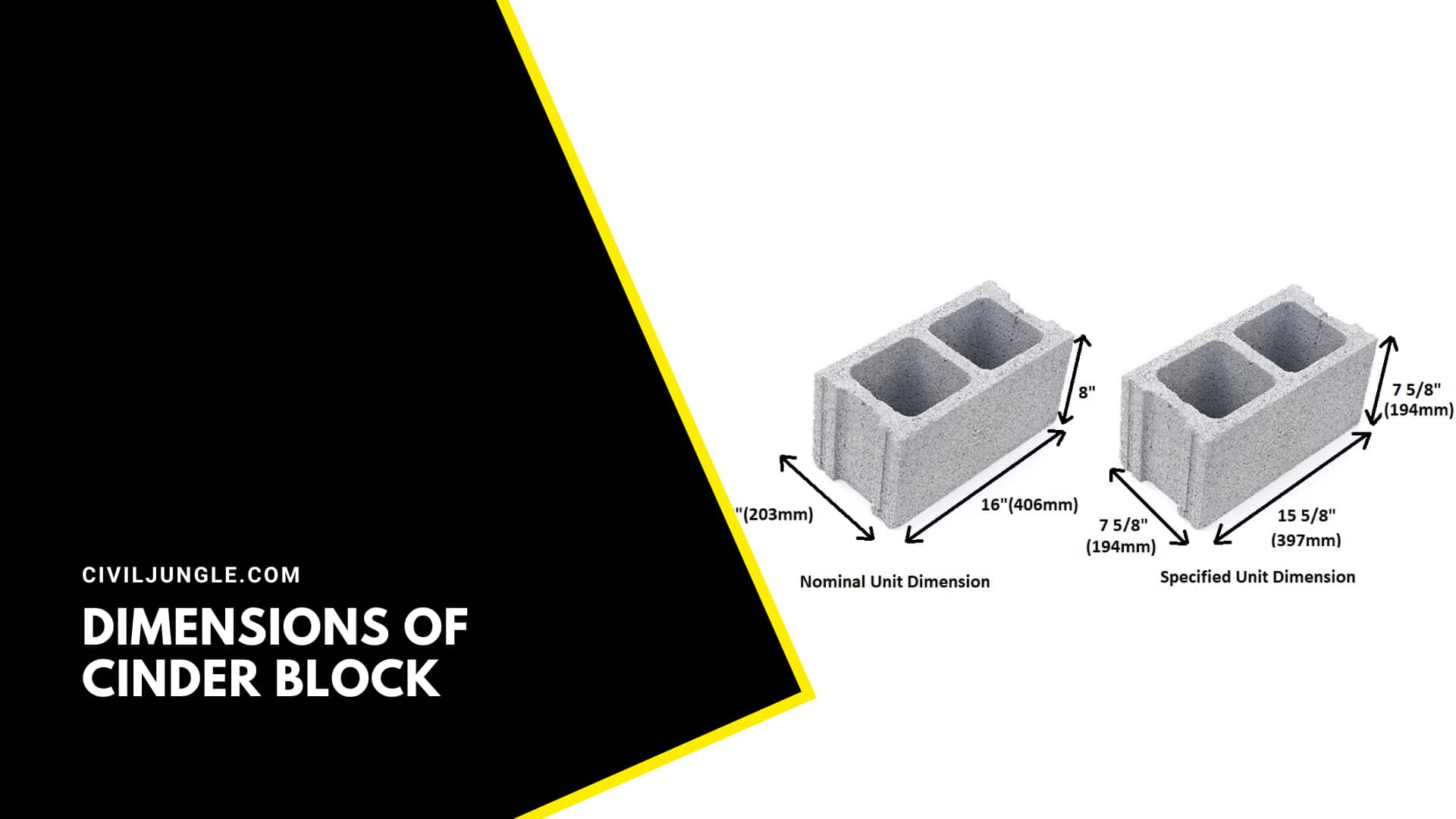
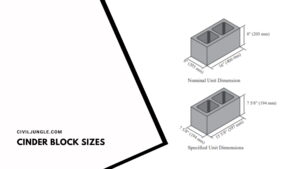
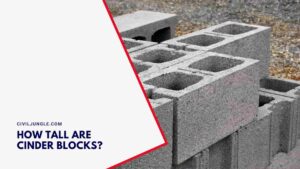
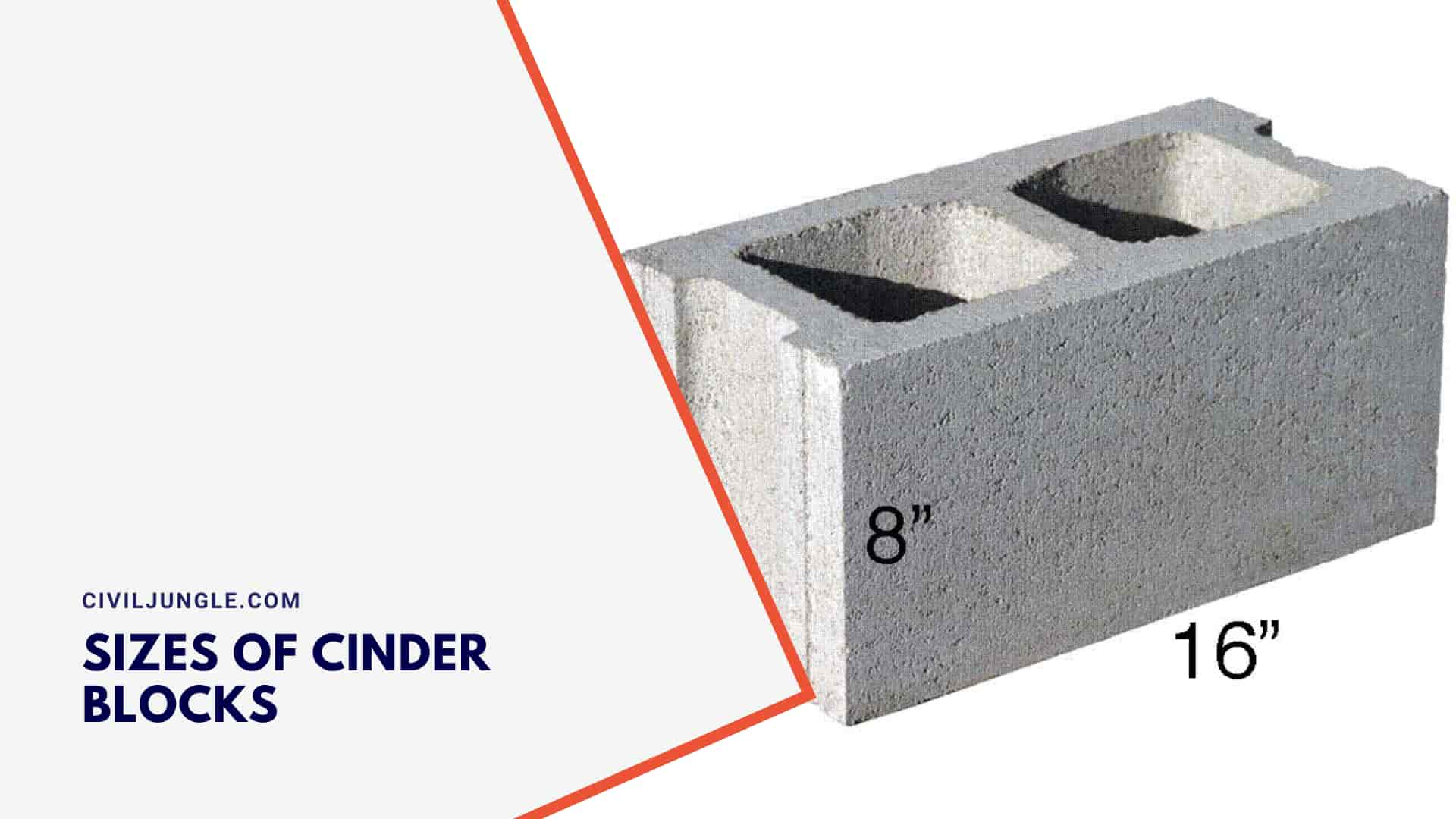
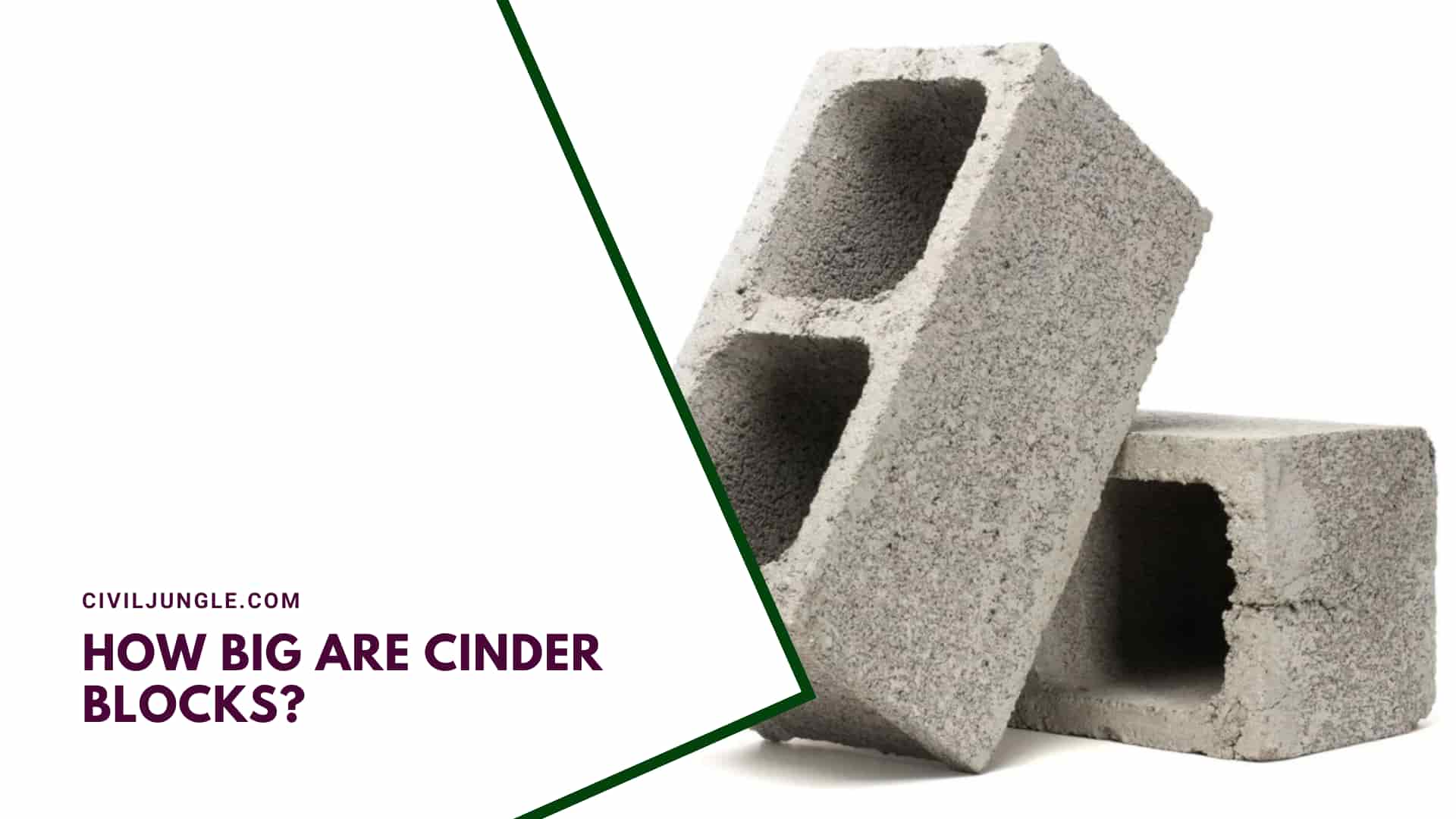
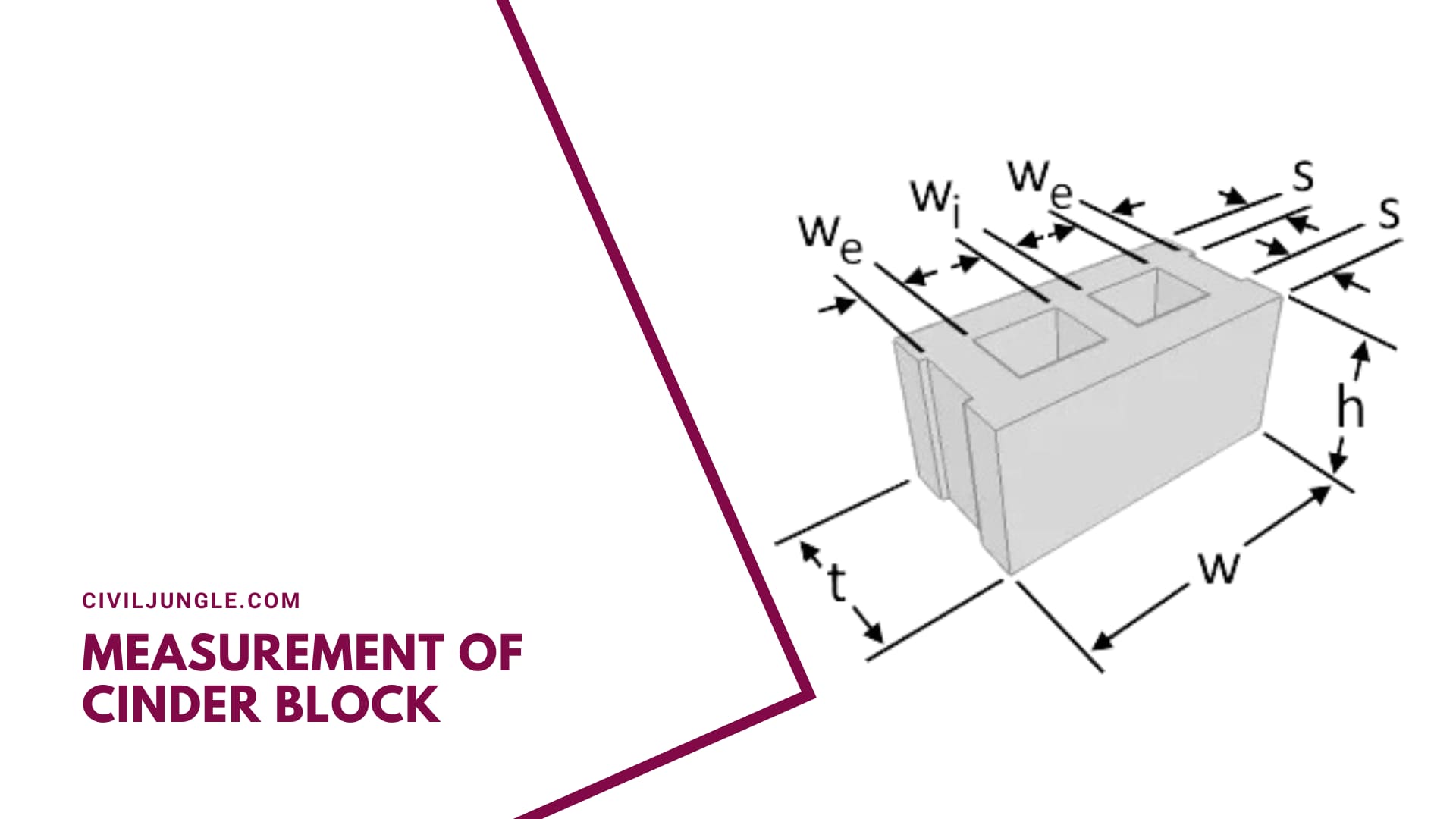
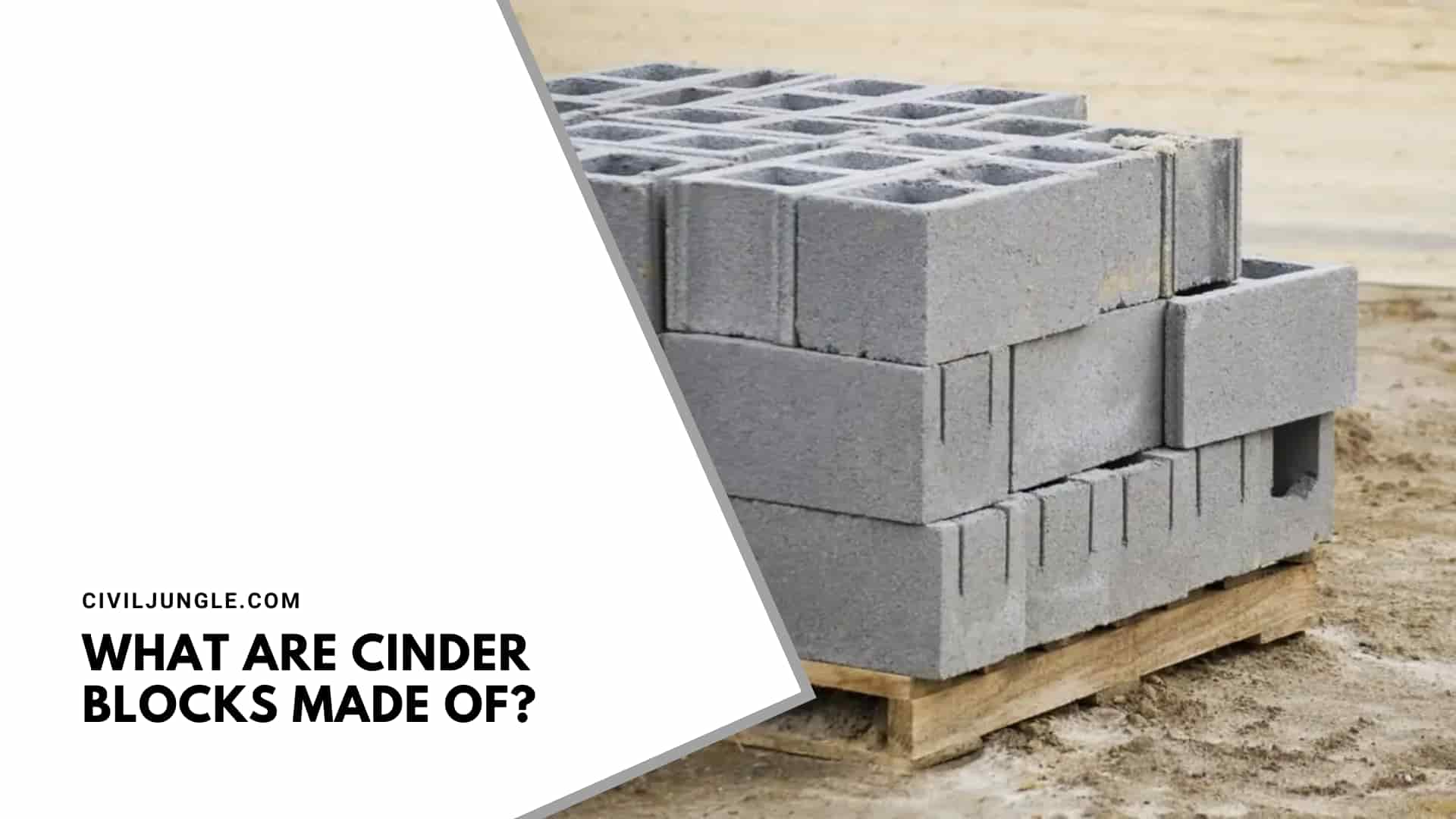
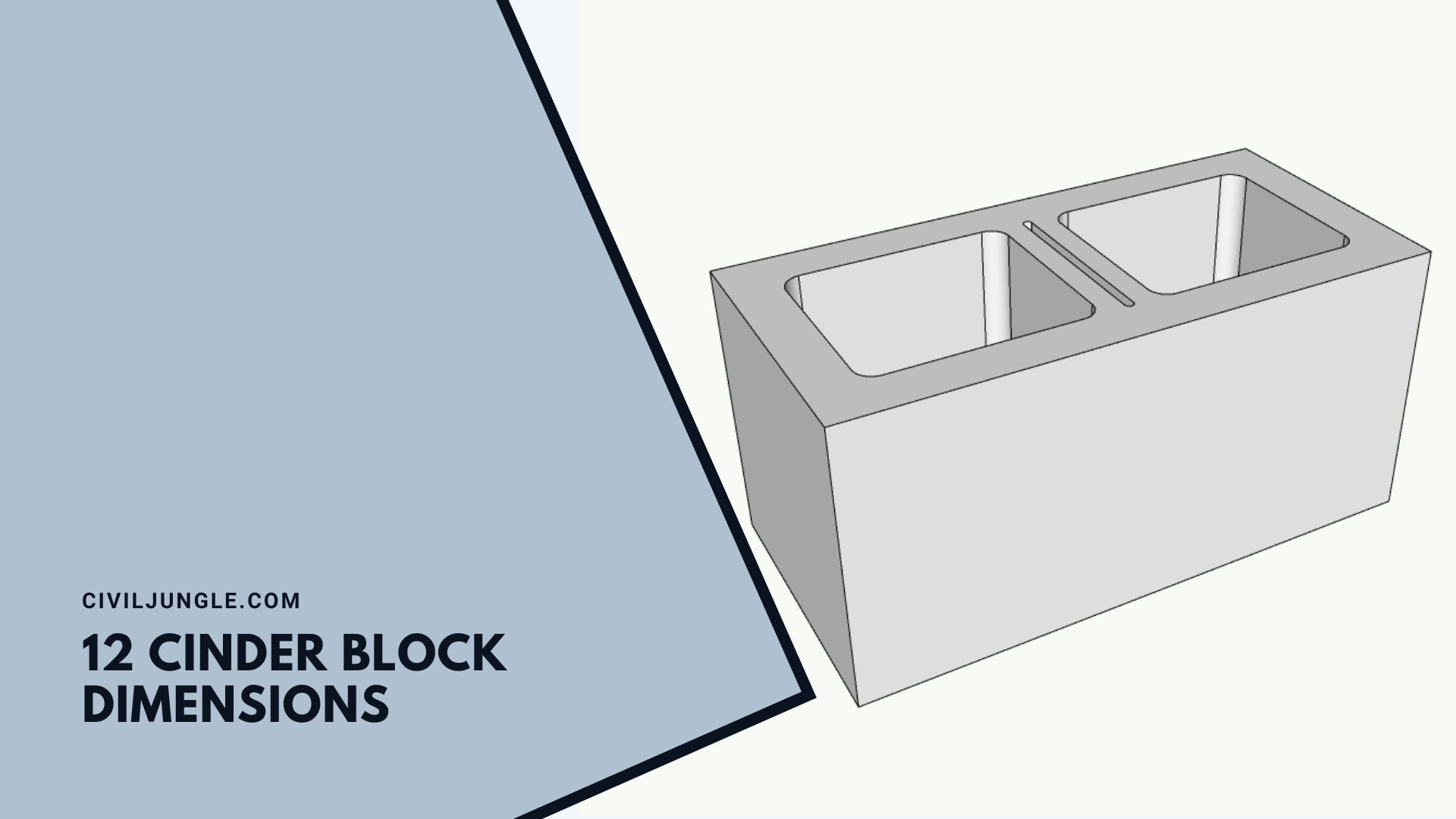

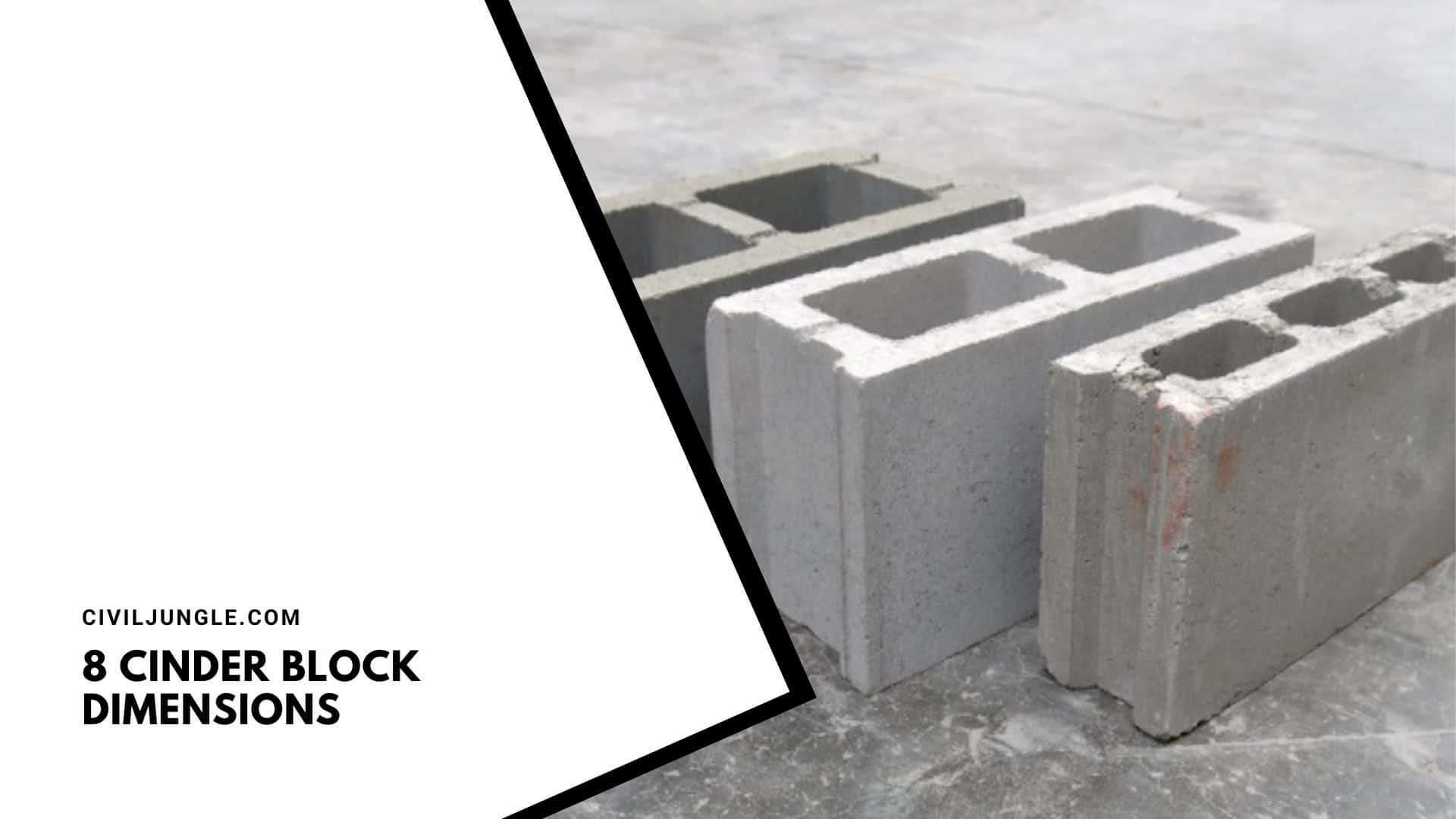
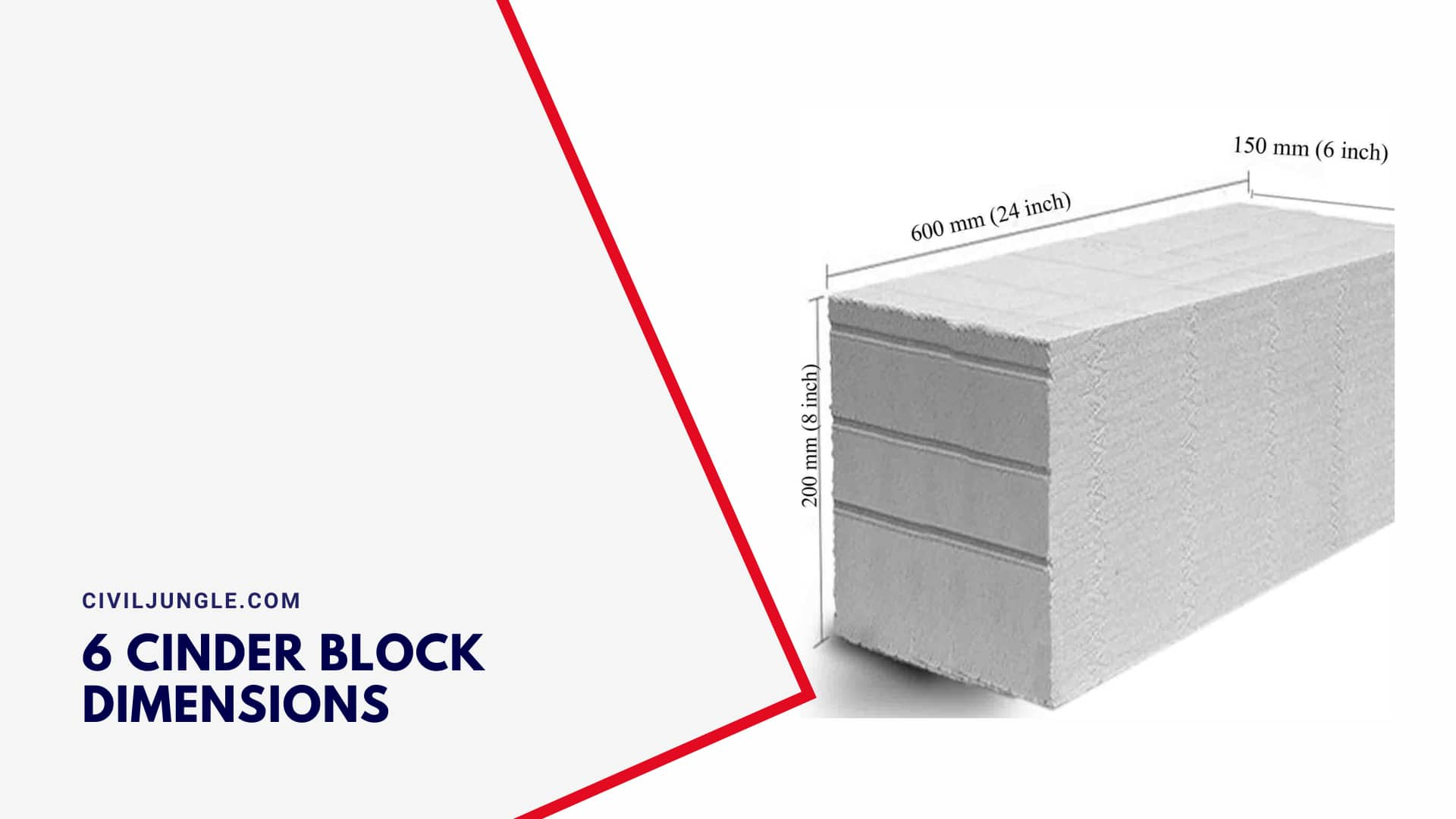
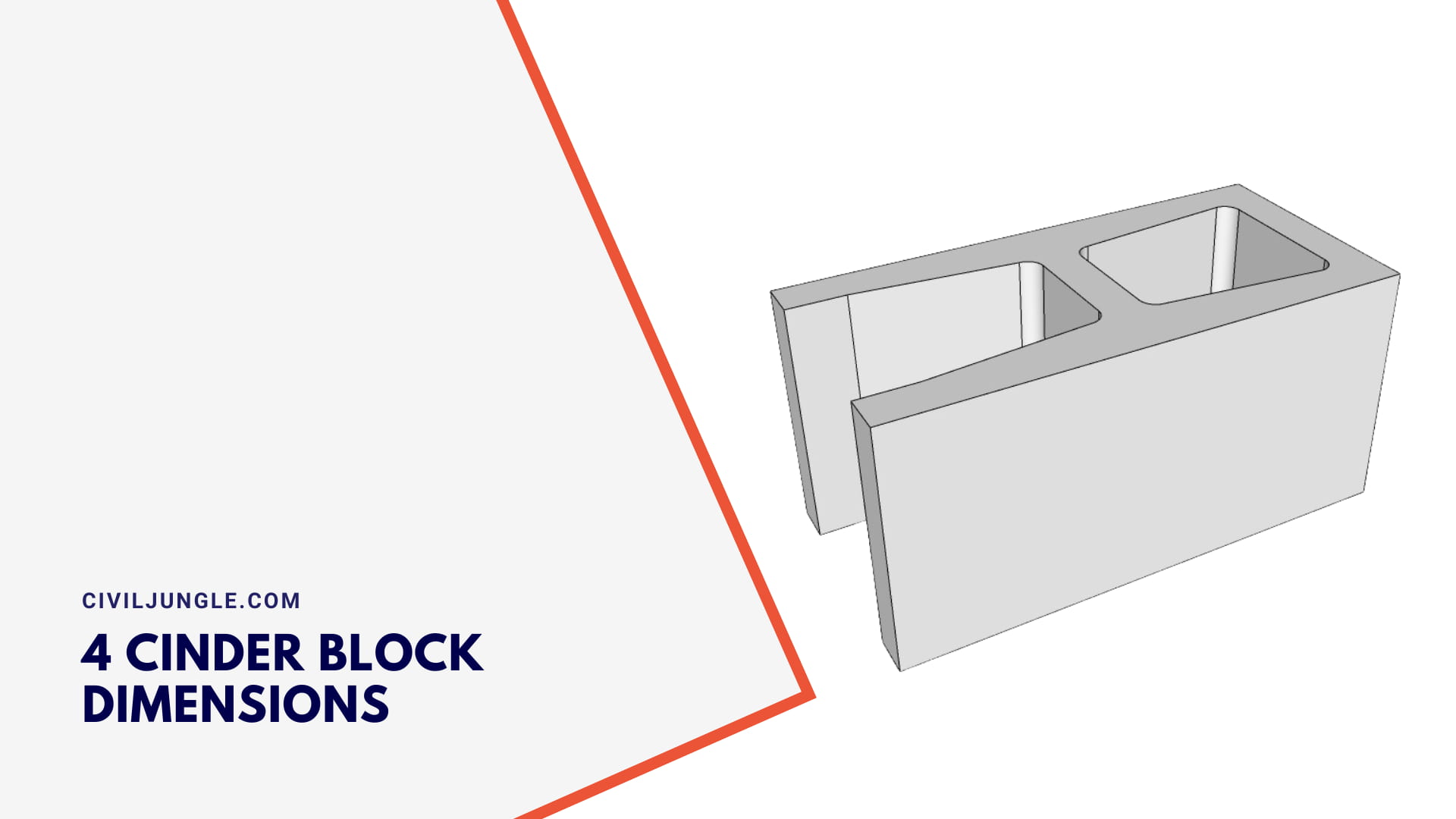
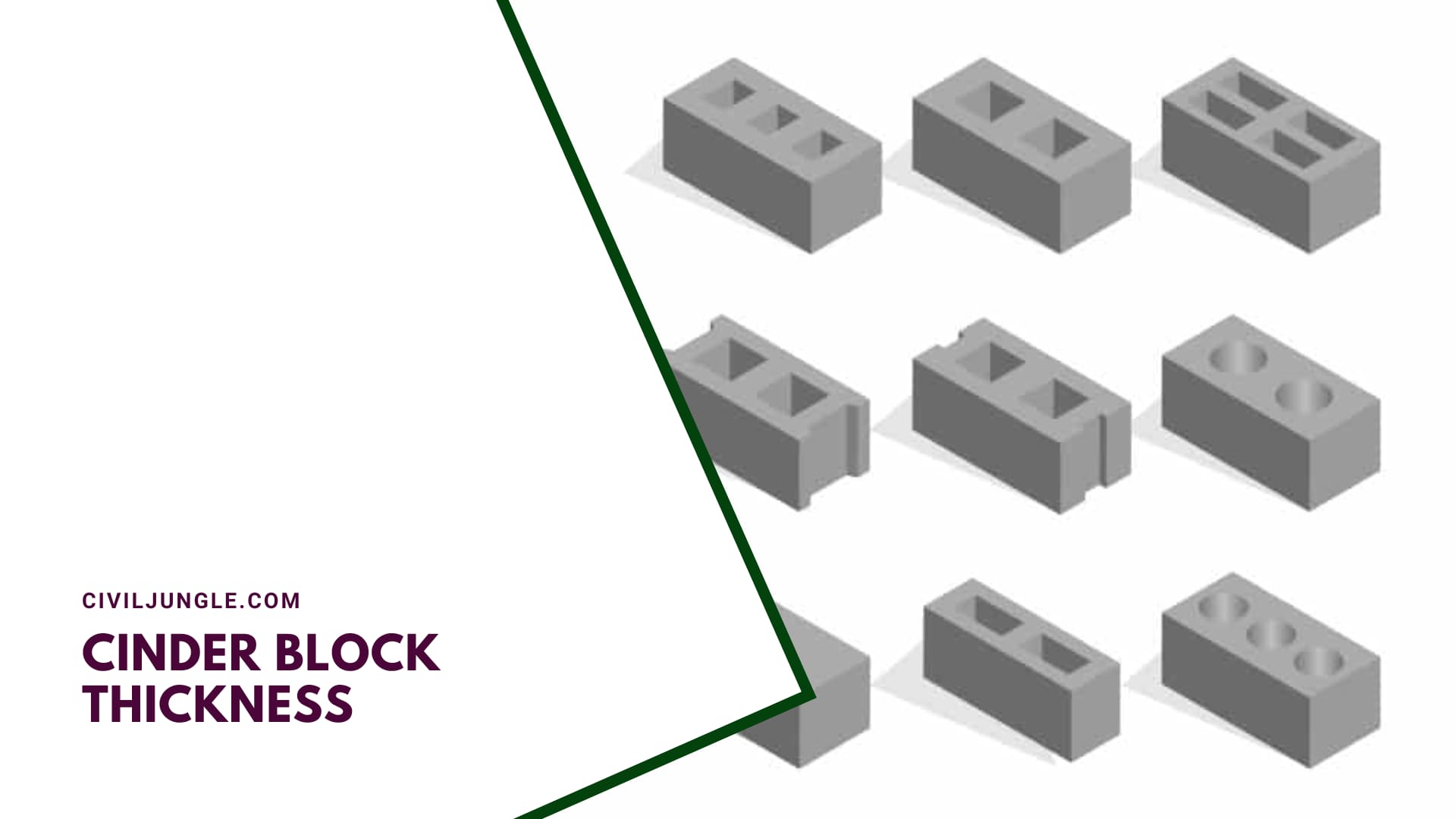
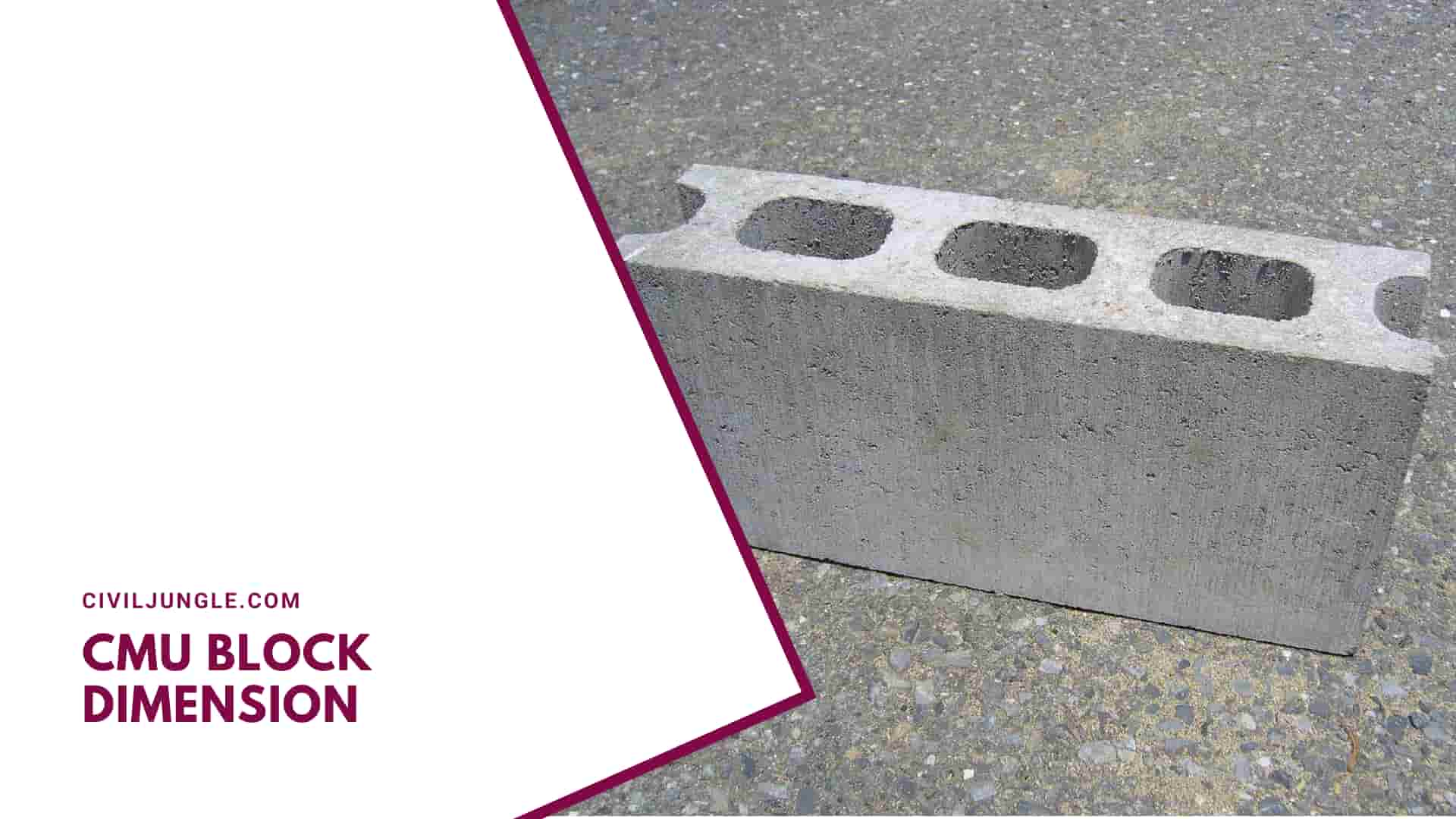

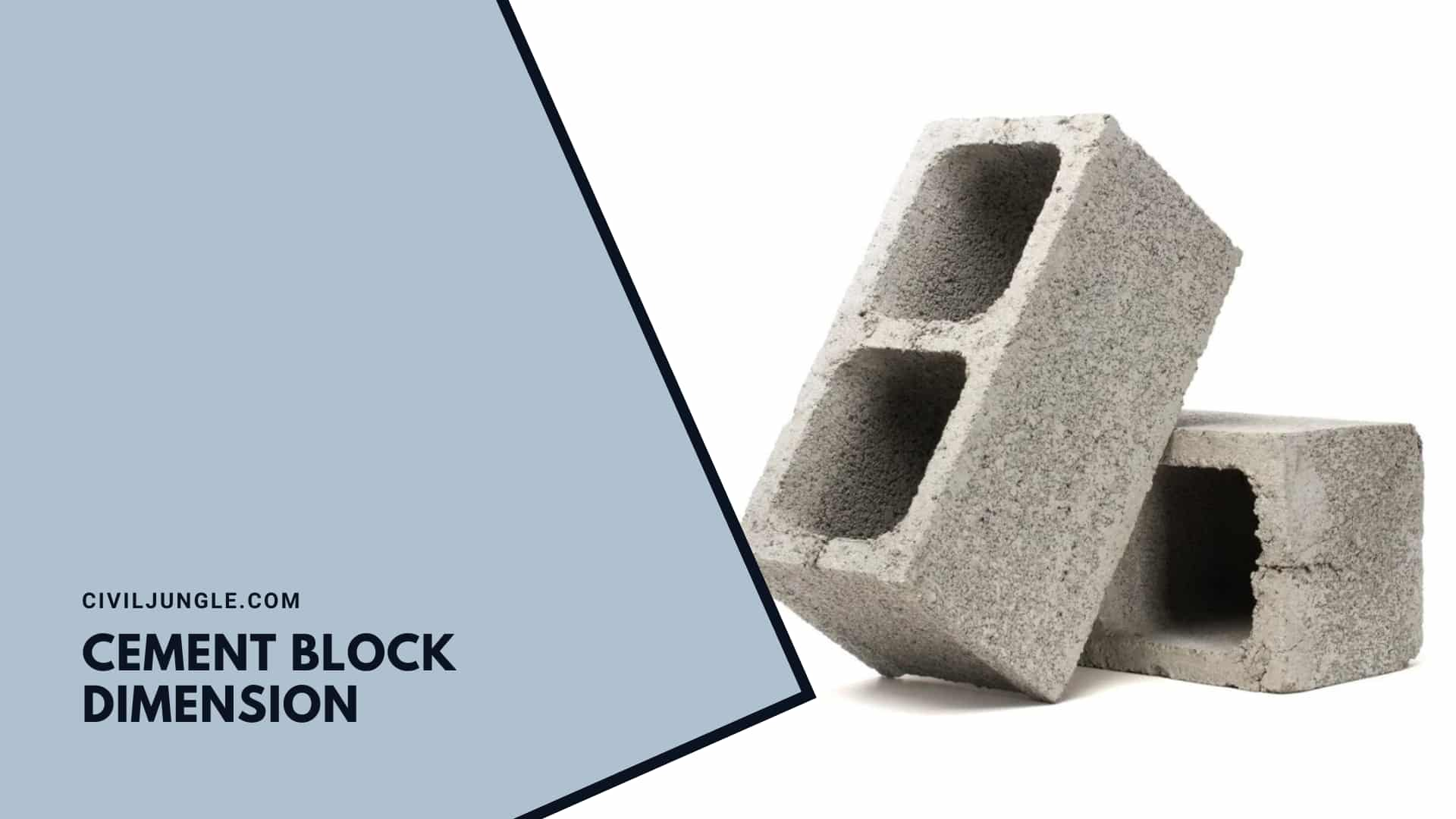
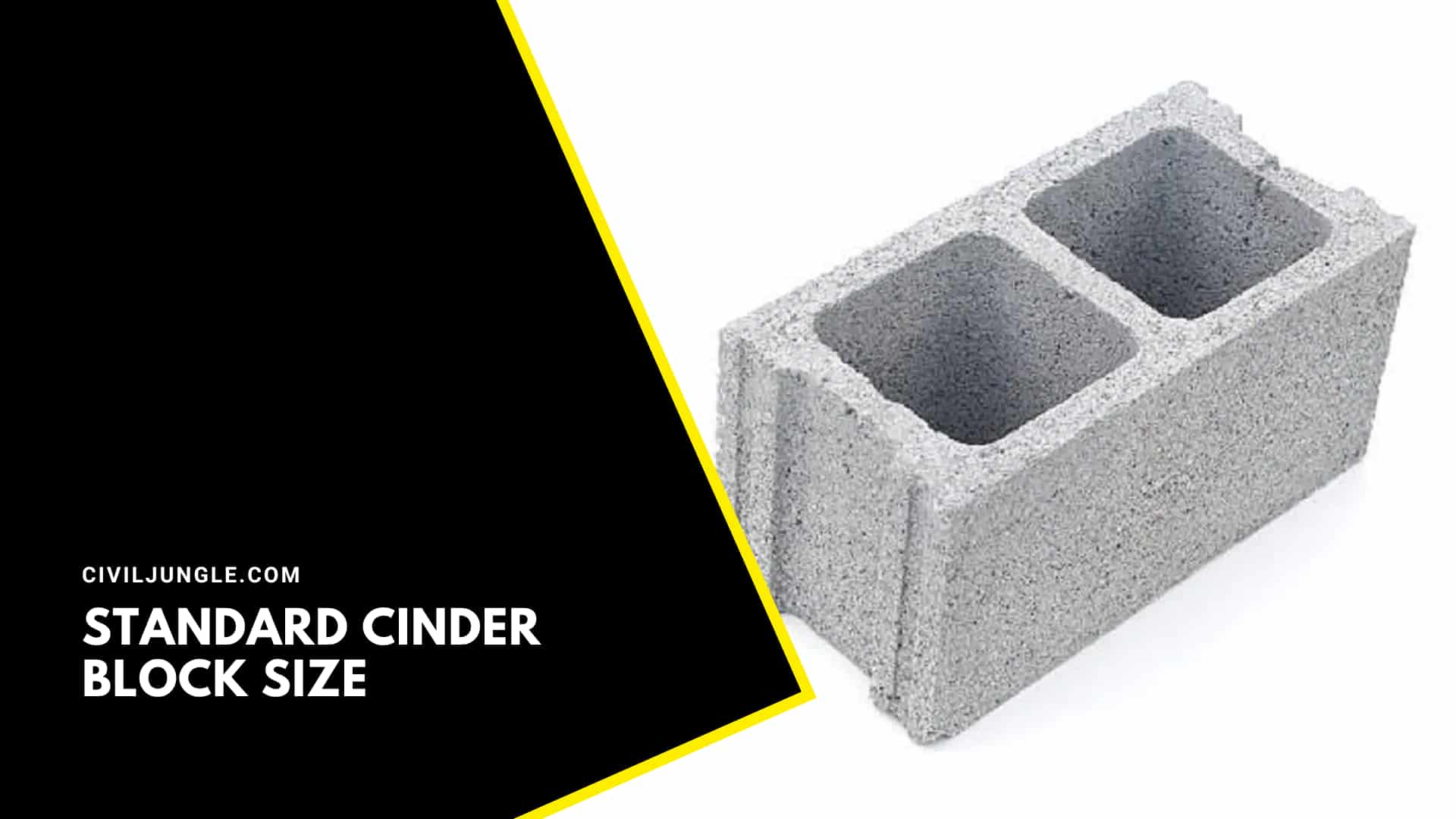
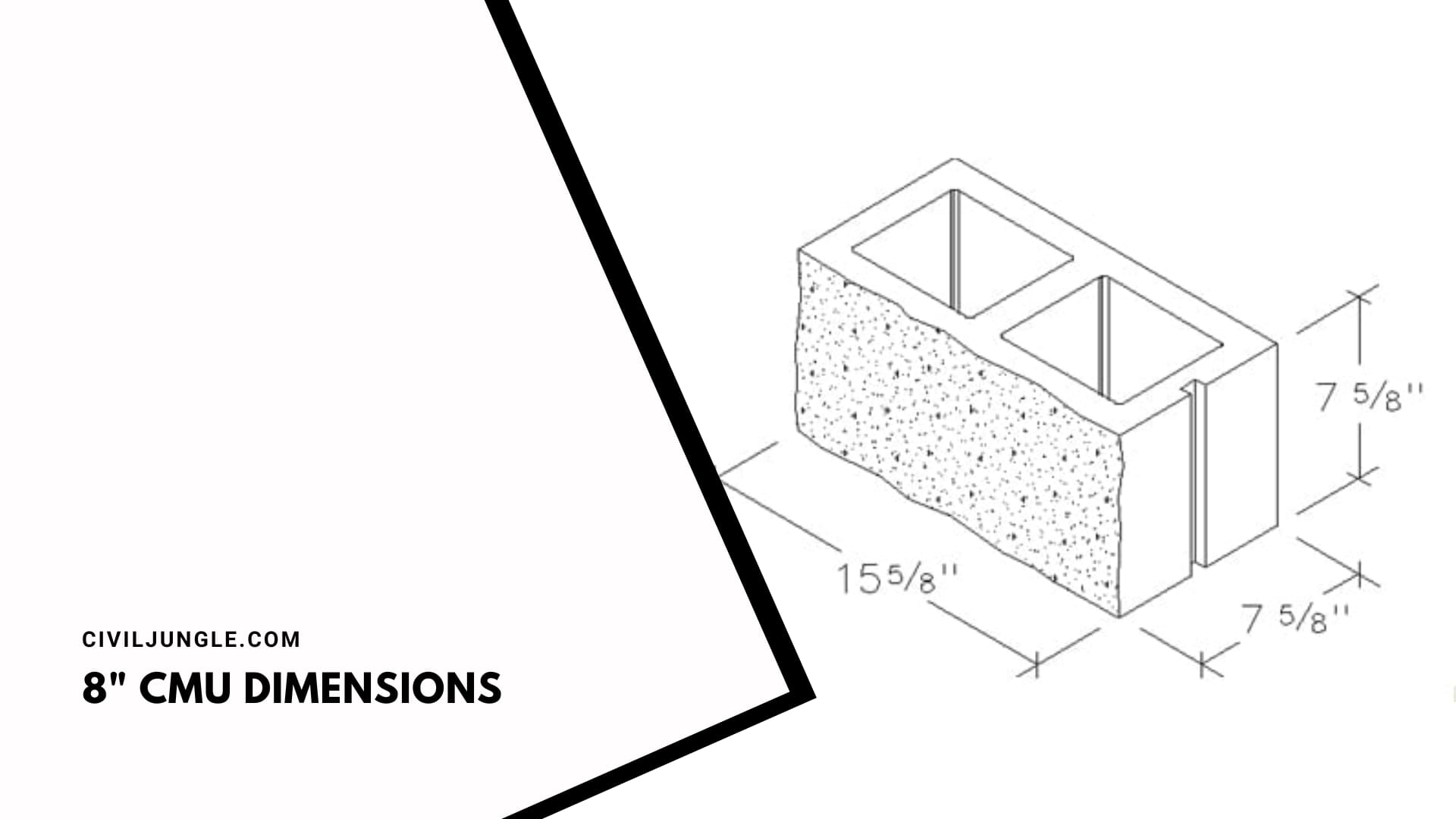

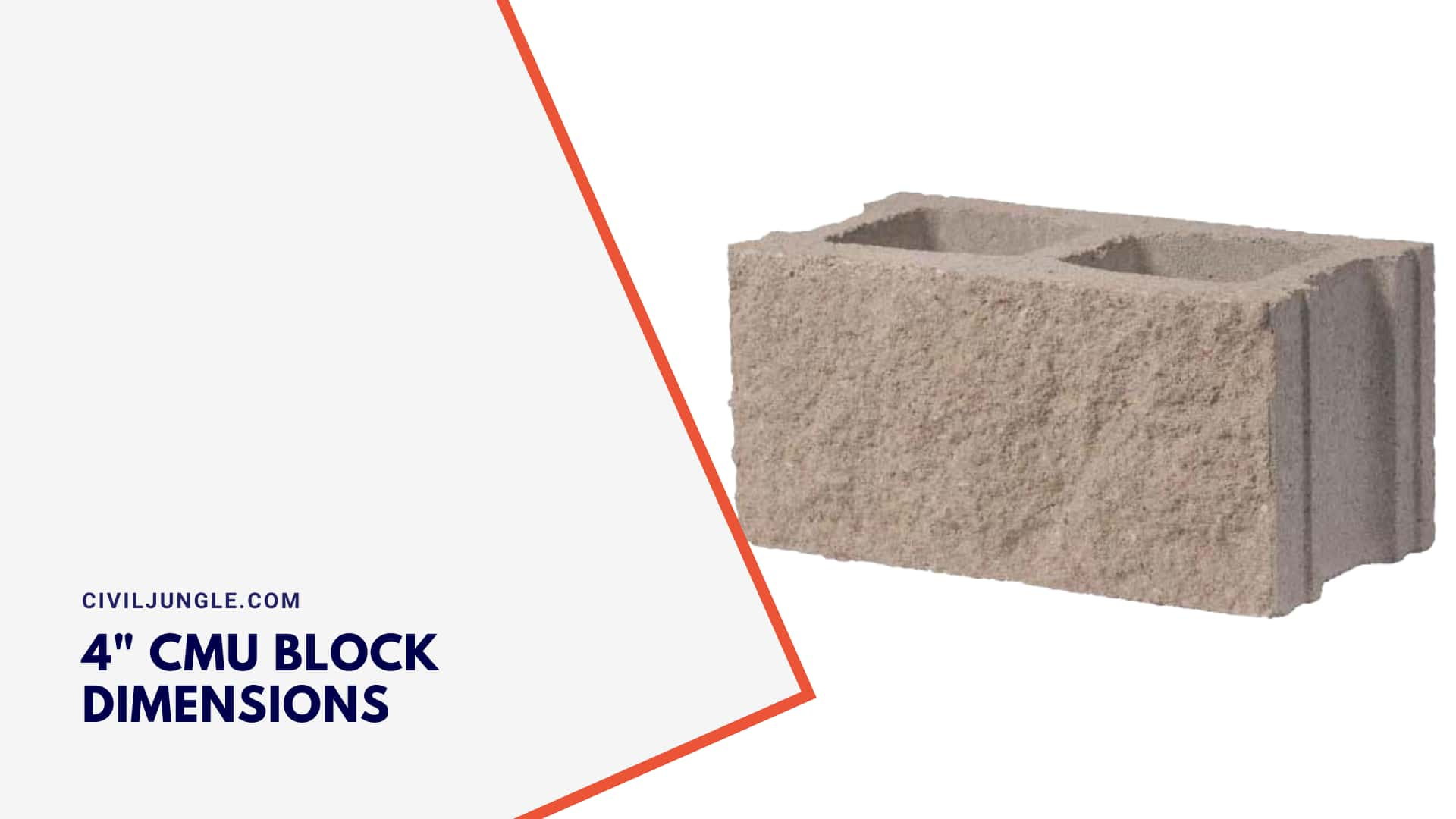
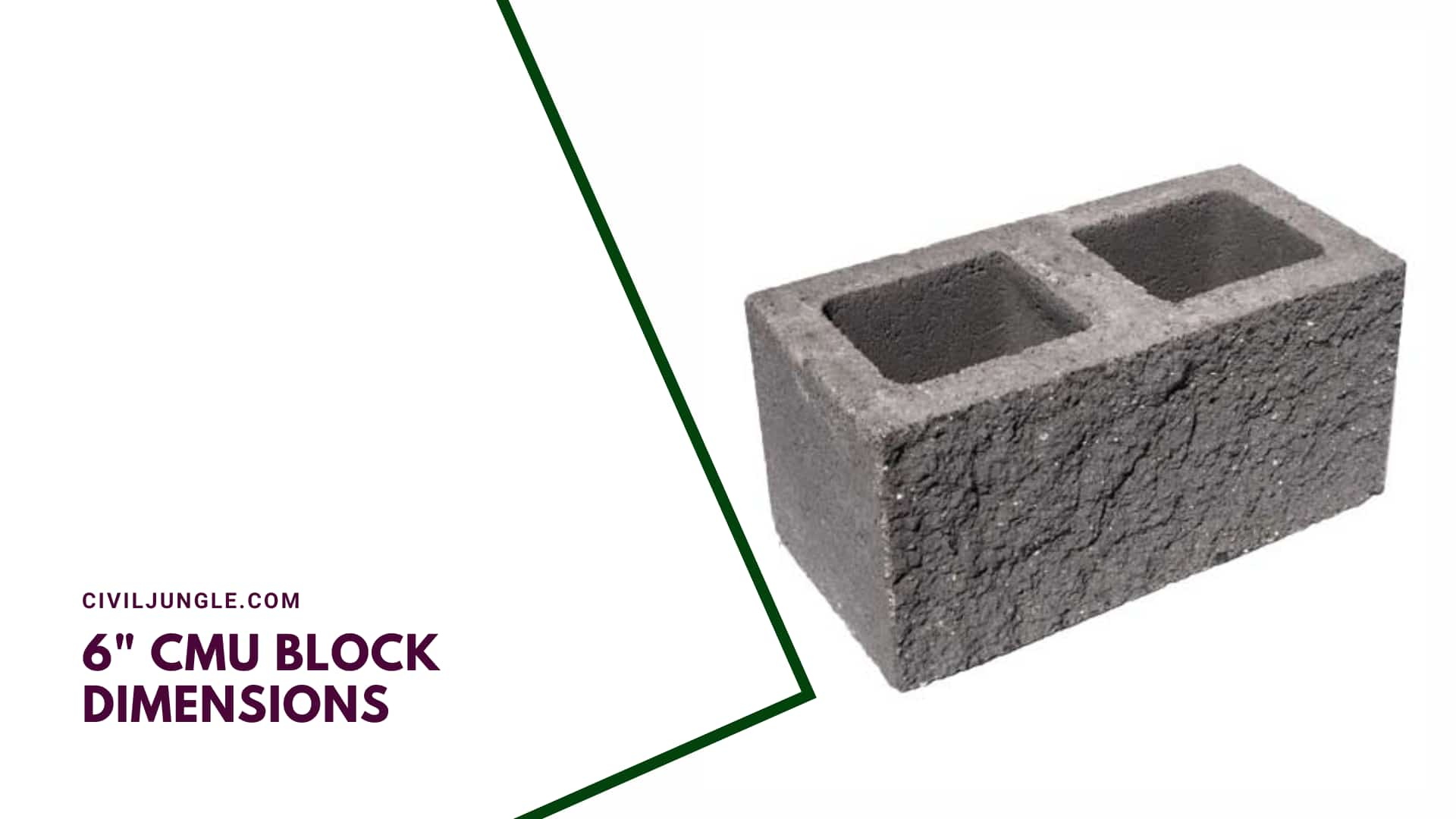
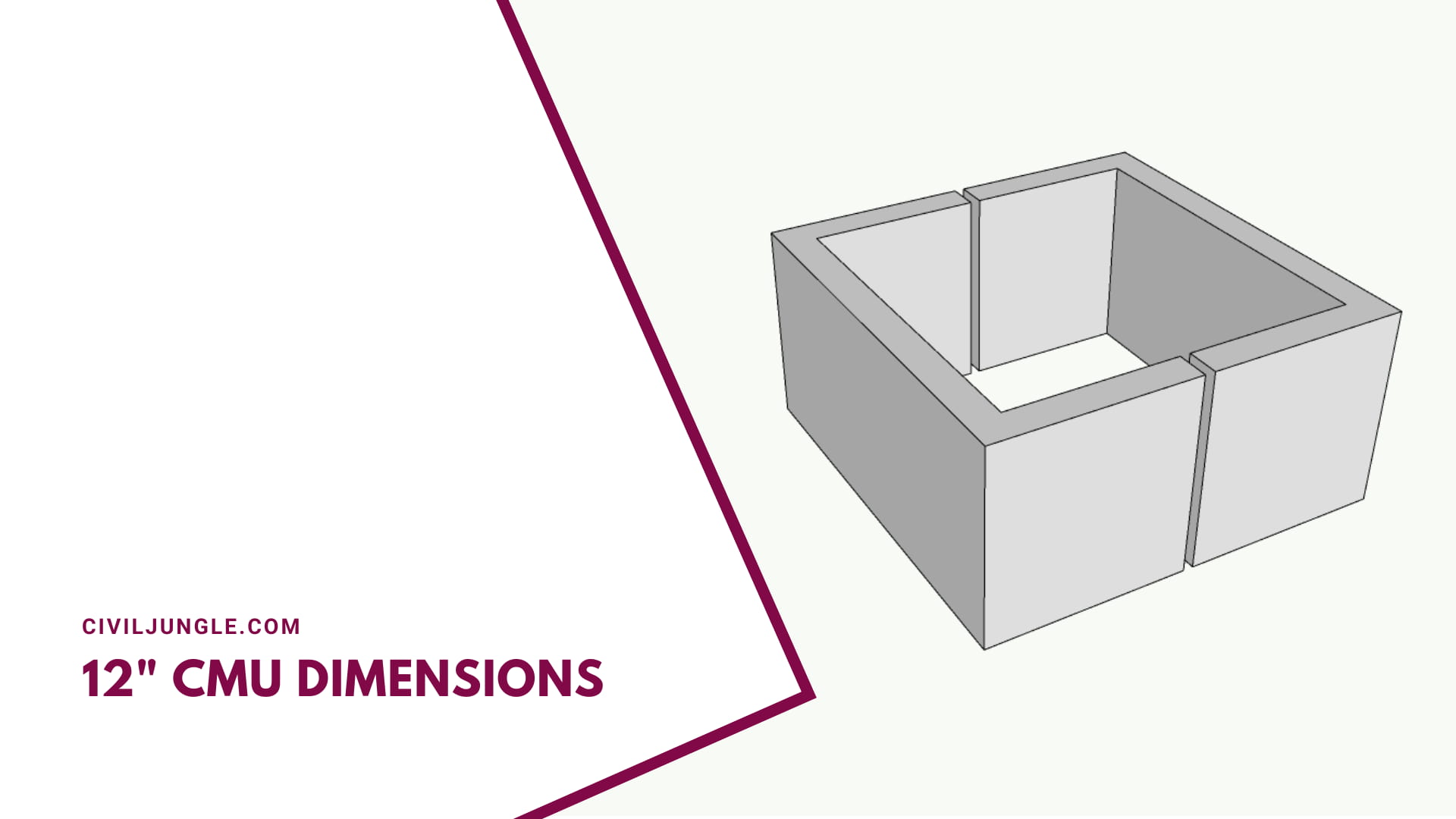

Leave a Reply